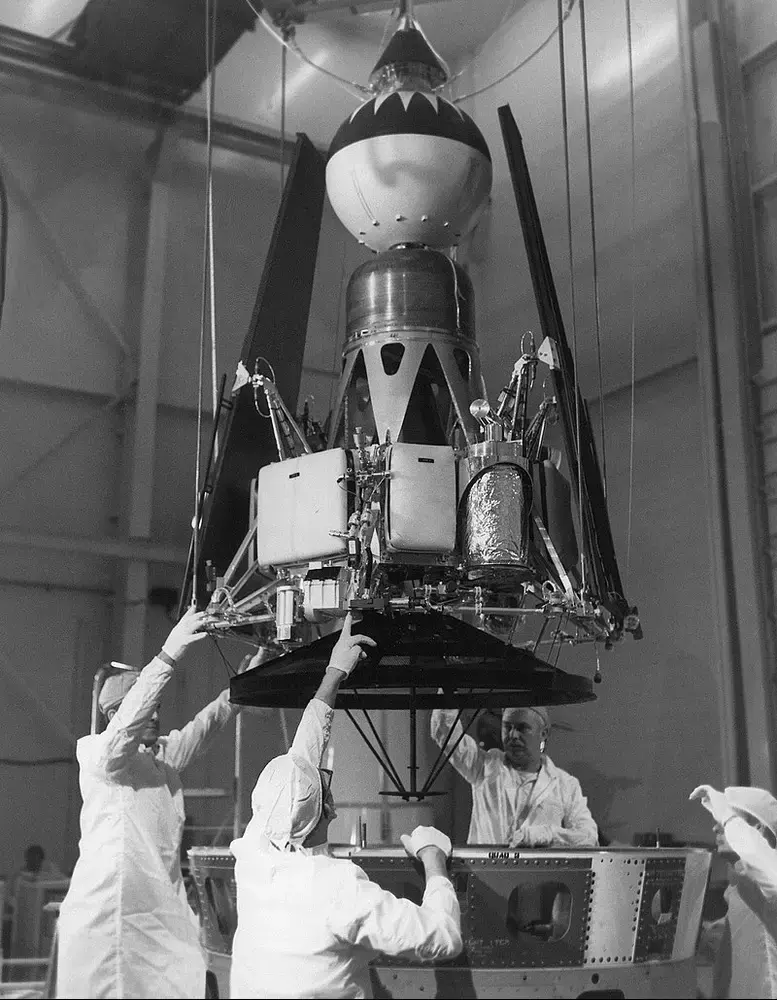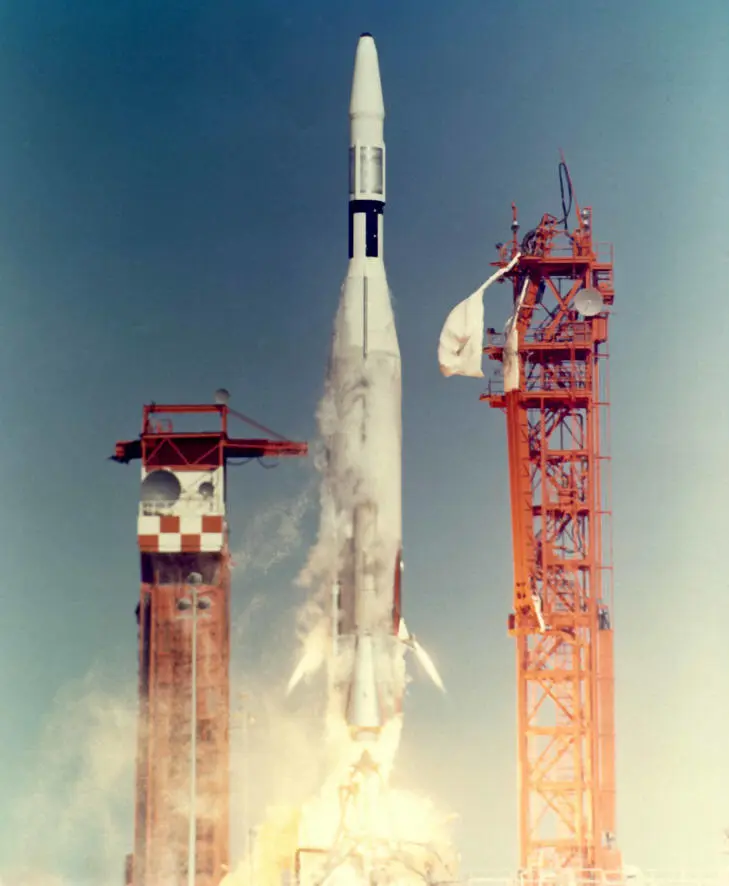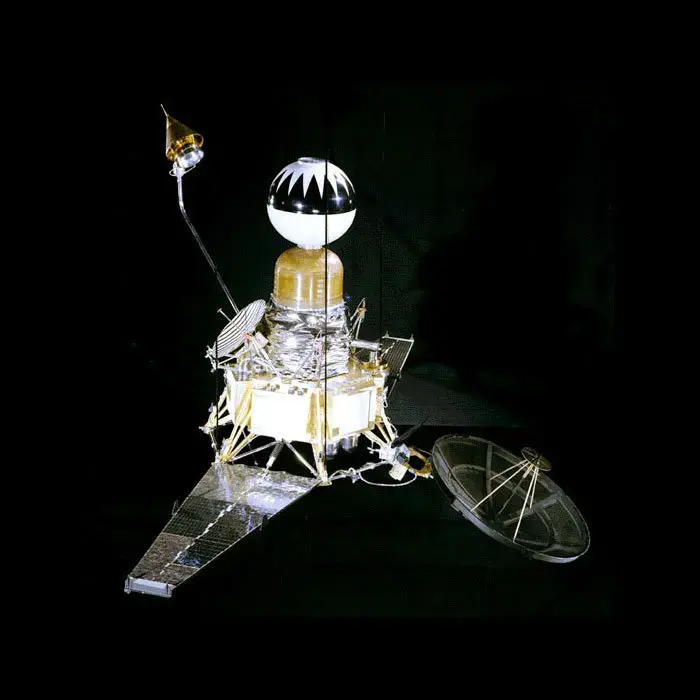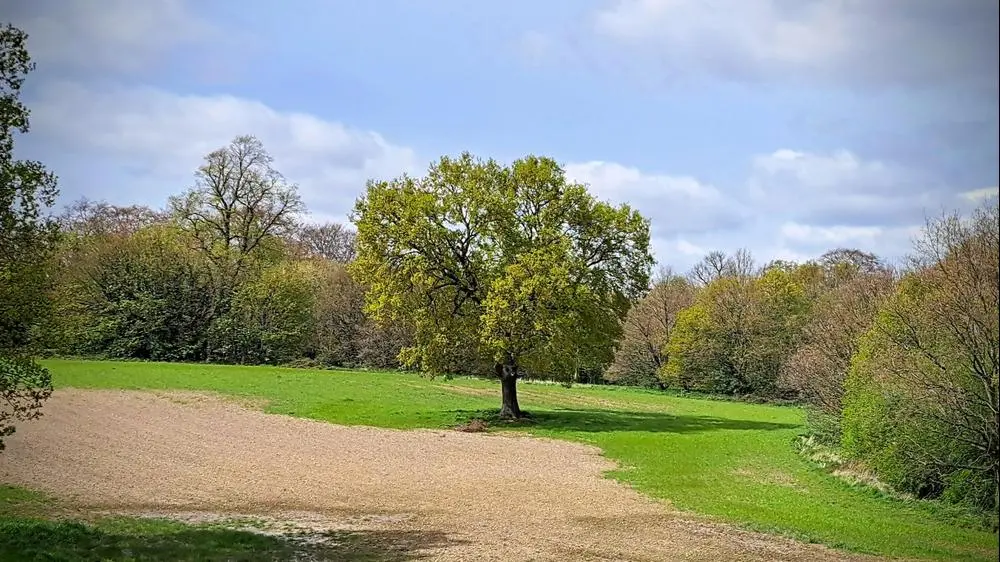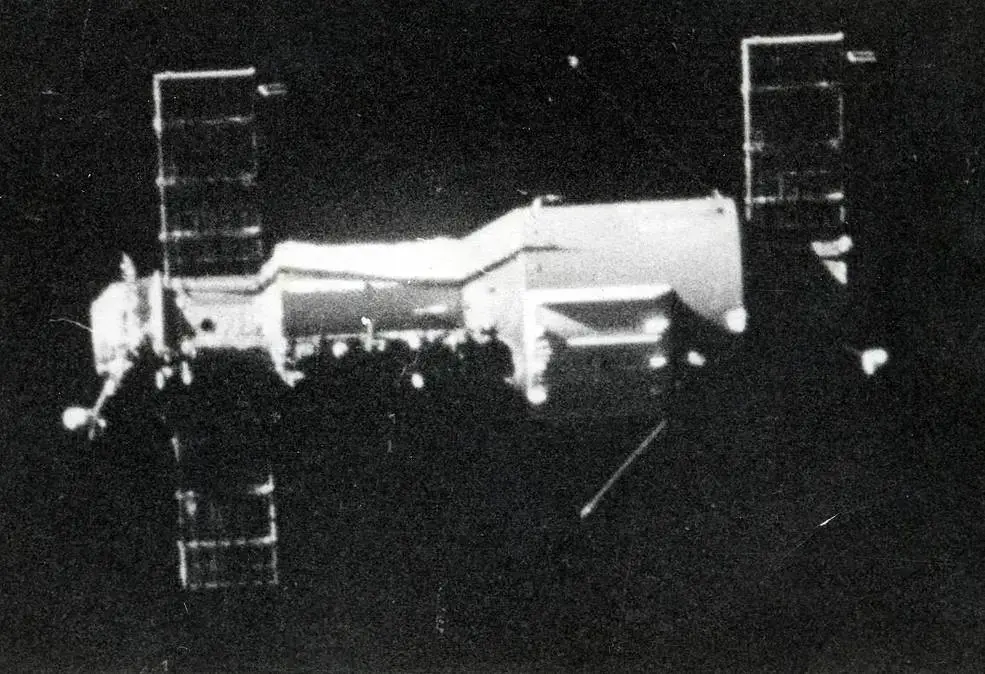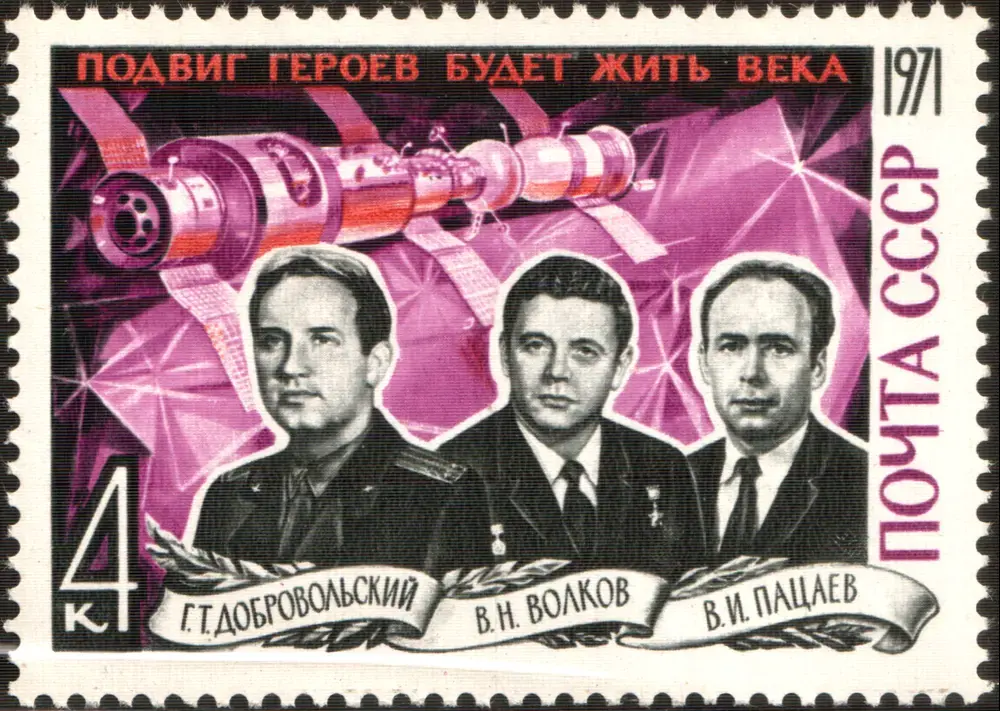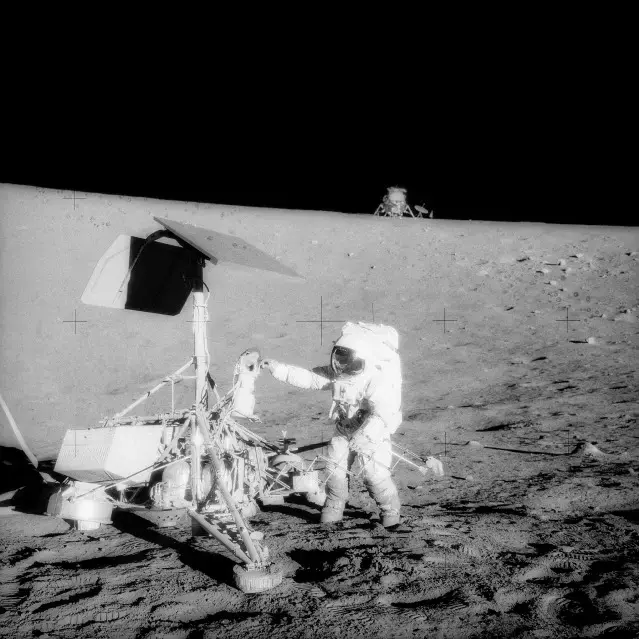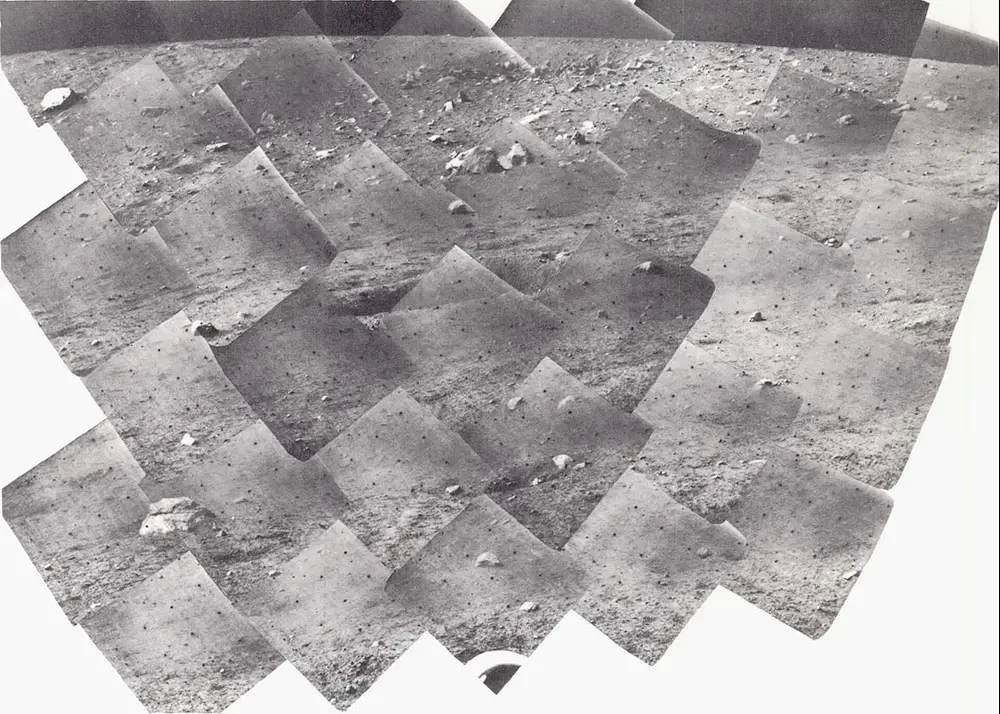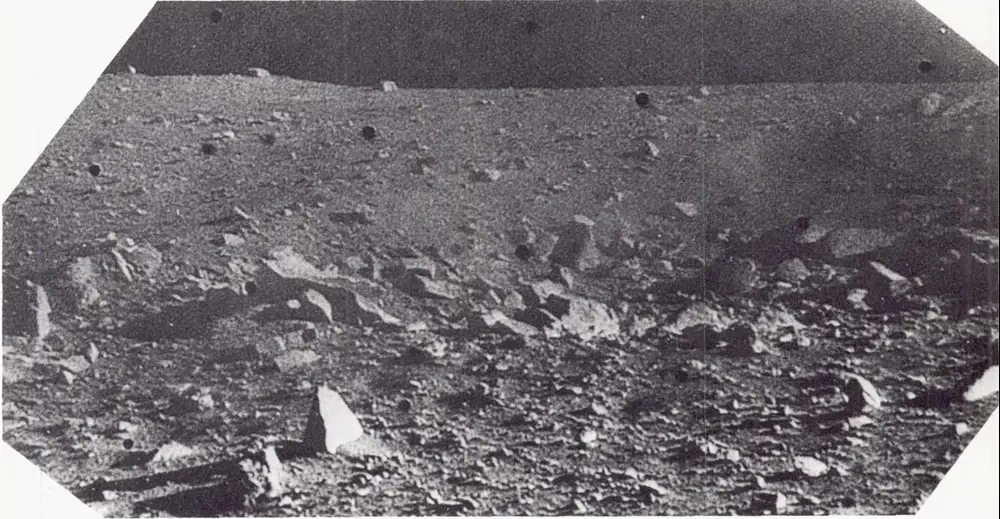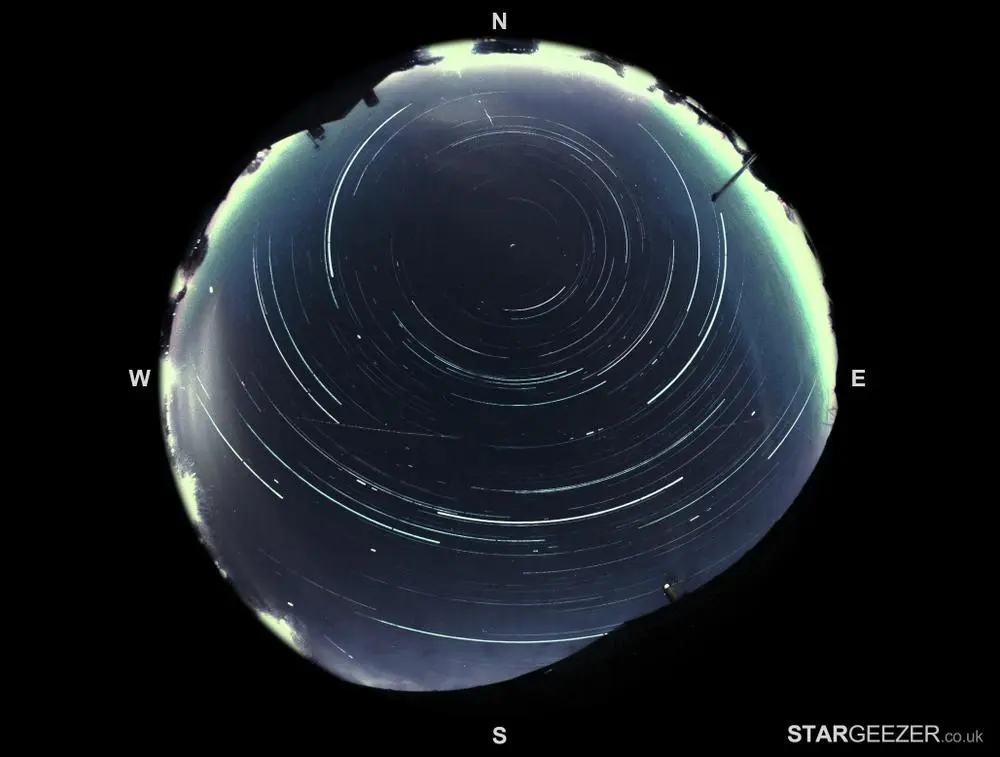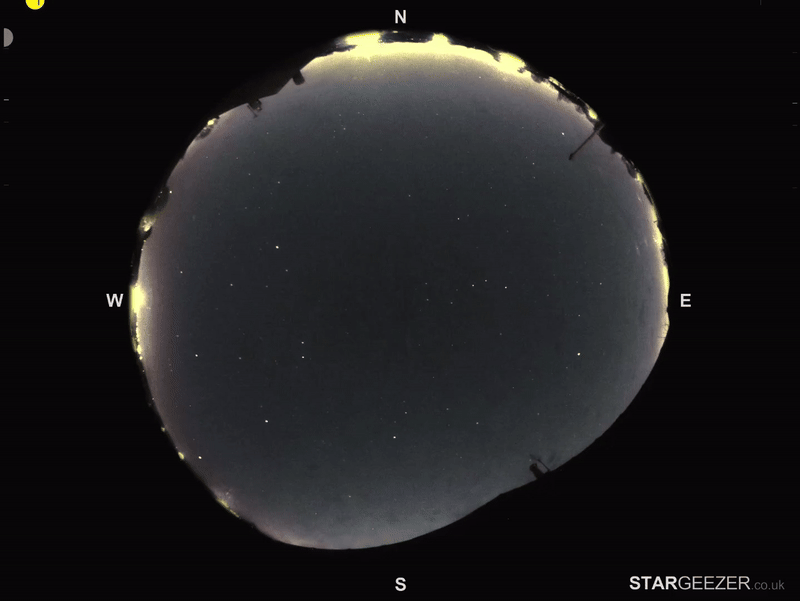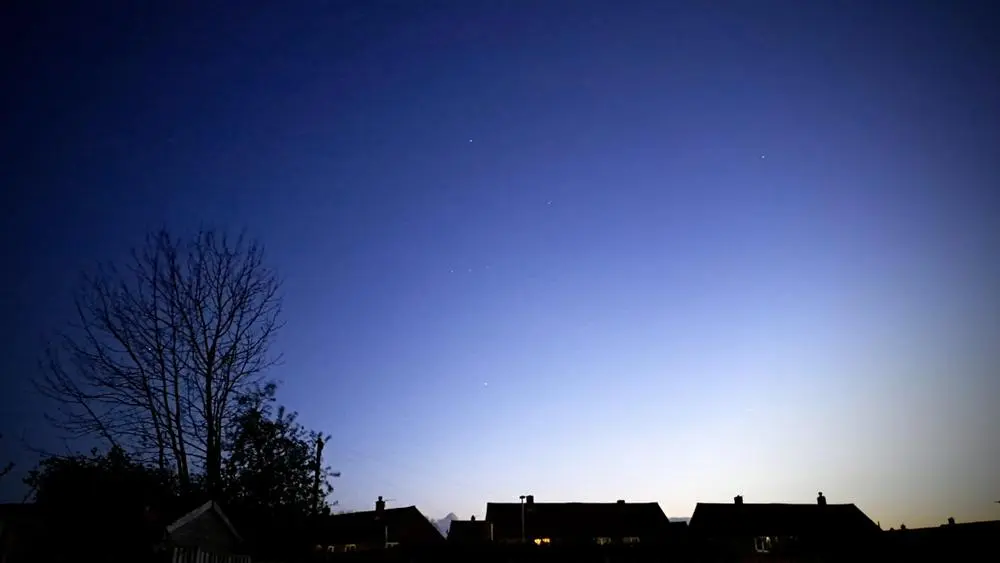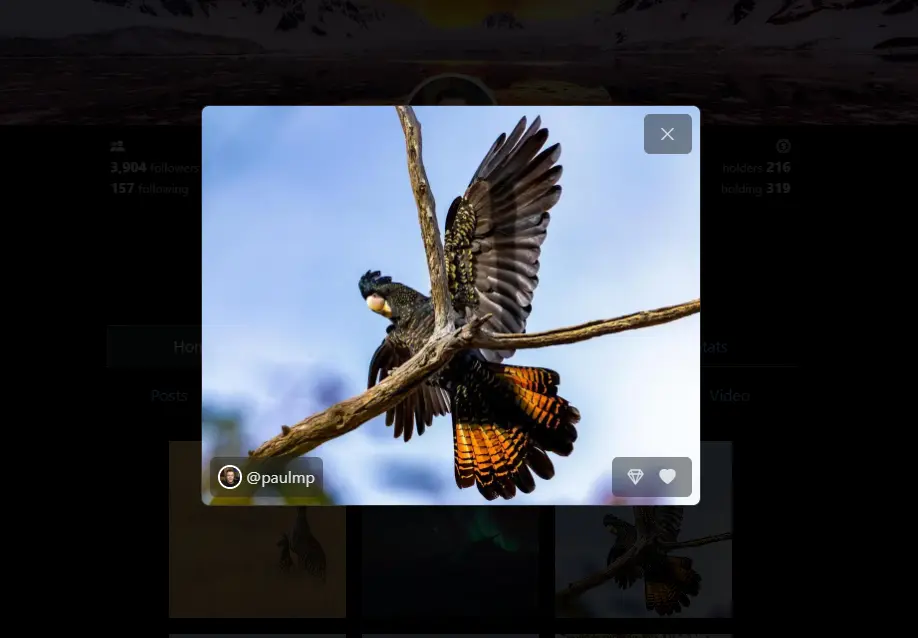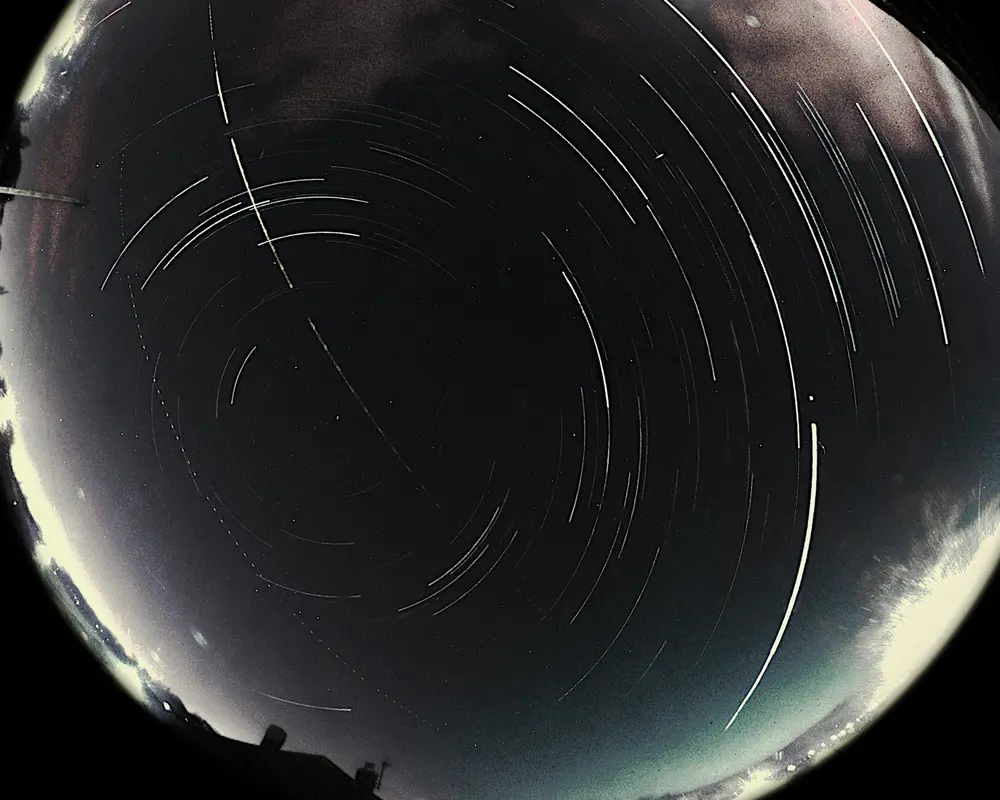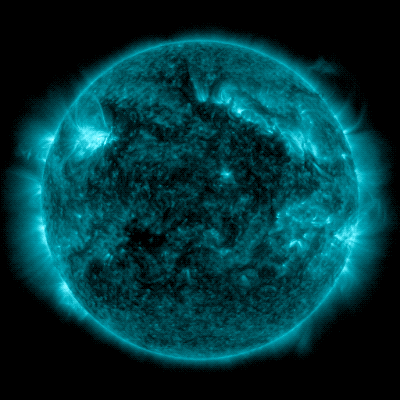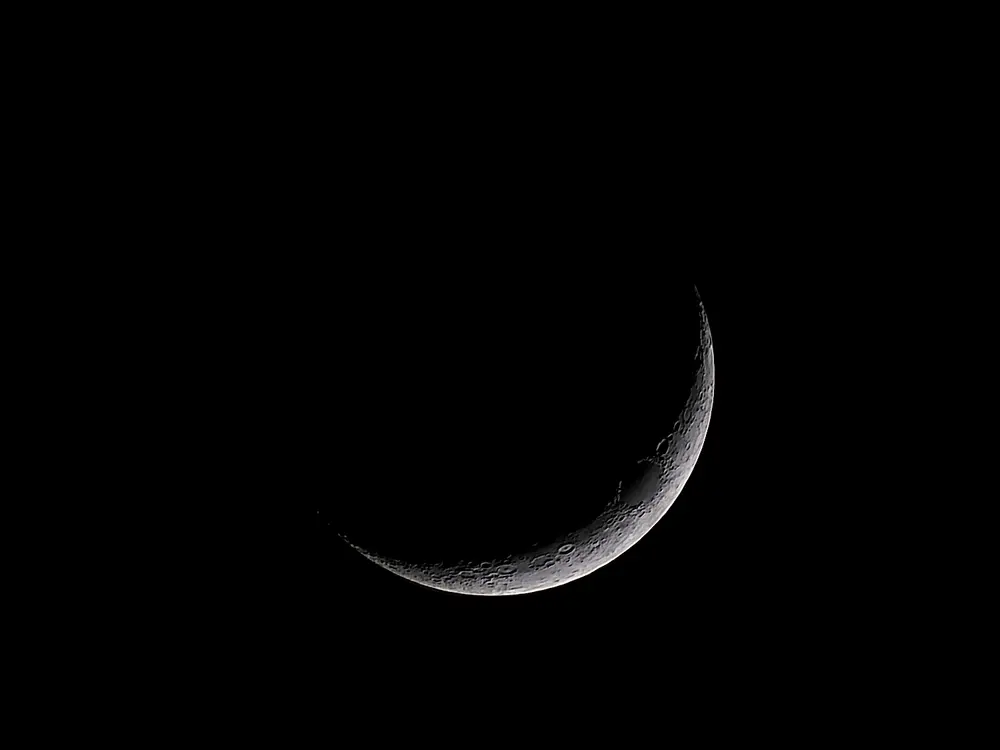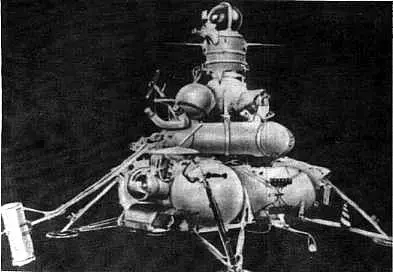Latest DESO posts
Simple astronomy – made easy.
🔭 Astronomy 📷 Photography 🌌 Space
👷♂️ Building community together 💖
© Images own work unless credited
Subscribe for alerts with @NoteMe:
👉 https://noteme.icu/subscribe/StarGeezer
Beginner’s astronomy guides:
👉 https://www.stargeezer.co.uk
💡 High founder reward to support upgrade fund and community activities.
🔭 Telescope Upgrade Fund – dedicated astrocamera 📷
🎯 🟩🟩🟩🟩🟩🟩⬛⬛⬛⬛ 1 09/180 Ð (60%)
FR, 💎s, NFTs and transfers to @StarGeezer_UpgradeFund
 StarGeezer 8 days ago
StarGeezer 8 days ago
If I make myself incredibly cute
…hooman might stop building the one true killer app
#Sabotage #Photography
 StarGeezer 10 days ago
StarGeezer 10 days ago
📅 62 years ago #OTD…
🛰 Ranger 4 crashes on the Moon
🌕 First US probe to impact the Moon
📺 Designed to transmit pictures during flight
📉 Contact lost 10 minutes before scheduled impact
🚀 Launched 23 April 1962 from Cape Canaveral, Florida
On Thursday, 26 April 1962, the Ranger 4 spacecraft became the first US probe to impact the Moon – making it a significant milestone in the country’s space exploration history.
Ranger 4 had launched three days earlier – from Cape Canaveral Air Force Station in Florida. It’s mission was to transmit images from the Moon and to gather scientific data during a 10 minute descent and impact into the surface.
It carried a Vidicon TV Camera, Gamma-Ray Spectrometer, Radar Altimeter and Single-Axis Seismometer to collect data to inform future landings on the lunar environment.
Unfortunately, an onboard computer failure meant that the solar panels failed to deploy and navigation systems were not operable. Without the solar power needed, the craft’s batteries were depleted before the planned impact and could not gather any useful images or data.
#Space #SpaceFirst #OnThisDay
Images – all credit: NASA
1. Technicians working on Ranger 4
2. Launch of Ranger 4 aboard Atlas-LV3 Agena-B
3. NASA Ranger 4 Craft
 StarGeezer 10 days ago
StarGeezer 10 days ago
GM fam 👋💖🌅
Up and at ’em 💪🔥
#Timelapse #Photography #Chill
 StarGeezer 2 weeks ago
StarGeezer 2 weeks ago
🌸 Nothing like Cherry Blossom
Shame it only lasts for a short while.
#Photography #Landscape
 StarGeezer 2 weeks ago
StarGeezer 2 weeks ago
My favourite tree has welcomed in Spring
#Photography #Landscape
 StarGeezer 2 weeks ago
StarGeezer 2 weeks ago
📅 53 years ago #OTD…
🛰 World’s 1st Space Station
🚀 Salyut 1 Space Station Launched
🏆 1st human-crewed space station
🌍 2,929 orbits around Earth over 175 days
🔥 Tragedy for last crew
🏠 Inhabited for 23 days
On Monday, 19 April 1971, the world’s first ever space station – Salyut 1 – was launched into low Earth orbit by the Soviet Union aboard a Proton-K rocket from the Baikonur Cosmodrome.
The station was designed to conduct scientific experiments and test long-term human habitation in space – equipped with an airlock, telescope mount, and a variety of scientific instruments.
Two missions visited Salyut 1 during it’s operation:
🚀 Soyuz 10, three days after the station’s launch carried a three-person crew, but was unable to dock due to a faulty hatch. The crew were forced to return to Earth after just a few hours.
🚀 Soyuz 11, launched a few months later, the Soyuz crew successfully docked with the station and the three crew members conducted scientific experiments for a record-breaking 23 days before returning to Earth. Sadly, Soyuz 11 suffered a catastrophic failure depressurizing during re-entry – killing all three cosmonauts:
Despite the tragedy associated with the Soyuz 11 mission, Salyut 1 paved the way for future space stations – leading to construction of Mir and the International Space Station, having proved the viability of long-term human habitation in space.
Salyut 1 comprised five compartments:
👨🚀 Transfer: docking for one Soyuz 7K craft (~2m diameter)
🛡 Main: Accommodation, living and control (~4m diameter)
🧰 2x Auxiliary: Control, communications, life-support systems and engines (~2m diameter)
🔭 Orion I Space Observatory: UV telescope, optical and spectrographic imaging. (~2m diameter)
Key stats:
📐 Measured: 15.8 x 4.15m, with 90m³ of habitable space.
⚖ Launch Mass: 18,900 kg
⚡ Power: 28m² solar panels, split across 4 arrays
📅 Days in Orbit: 175 days – 2,929 orbits
🛰 Distance travelled: 118,602,524 km
👩🚀 Days occupied: 23 days
☄ Deorbit: deorbited intentionally on 11 Oct 1971
#Space #SpaceFirsts #OnThisDay
Images:
1. Salyut 1 in orbit, Credit: RKK Energia
2. Stamp in in memory of Cosmonauts Georgy Dobrovolsky, Vladislav Volkov and Viktor Patsayev of Soyuz 11, Public Domain
 StarGeezer 3 weeks ago
StarGeezer 3 weeks ago
📅 57 years ago #OTD…
🛰 Surveyor 3 launched
🌕 Second US spacecraft to soft-land on the Moon
📸 Returned close-up images of lunar surface
🛰 Conducted key analysis to support Apollo landings
🏆 1st craft to carry surface-soil scoop
On Monday, 17 April 1967, NASA launched Surveyor 3 – the third lander of the Surveyor Program and only the second US spacecraft to achieve a soft landing on the Moon.
It’s landing was not straight-forward though: reflective rocks confused the lander’s descent radar causing it’s engines to cut-out prematurely – with the lander descending quicker than intended and bouncing twice on the surface before settling with a soft touch-down.
The spacecraft was designed to perform sampling of the surface and was fitted with a number of cameras to image the surface and samples taken. The cameras returned 6,326 pictures between 20 April and 3 May, when it was shutdown for lunar night – and after which could not be reactivated.
These images provided crucial information about the Moon’s geology and topography and included views of the spacecraft, panoramic lunar surveys, the mechanical surface digger at work and of an eclipse of the Sun by the Earth on 24 April.
The craft dug four trenches and collected samples in view of it’s cameras and based on experiments, provided evidence to conclude the lunar surface was solid enough to support the landing of a Lunar Module.
Notably Surveyor 3 became famous when chosen as the landing site for Apollo 12 – who successfully landed within walking distance and photographed the probe, retrieved samples, sensors and equipment – including the cameras which held further images than already returned.
#Space #Moon #OnThisDay
Images, Credit: NASA
1. Charles Conrad, of Apollo 12, inspecting Surveyor 3 with lunar module in the distance.
2. Surveyor 3 photographed during second Apollo 12 extravehicular activity.
3. Panorama returned of the Mare surface
4. Angular rocks photographed around a sharp-rim crater
 StarGeezer 3 weeks ago
StarGeezer 3 weeks ago
✨ Star Trails – 9 April 2024
#Photography #Space
 StarGeezer 4 weeks ago
StarGeezer 4 weeks ago
📷 Star Trails
📅 Night of 9 April 2024
#Photography #Space
 StarGeezer 4 weeks ago
StarGeezer 4 weeks ago
🌃 Good Night Deso 💖
✨ Quick #timelapse from the sky cam
#Photography #Space
 StarGeezer 4 weeks ago
StarGeezer 4 weeks ago
🌄 Twilight is a beautiful time ✨
Seeing the stars quickly appear right in front of your eyes as the sun falls further behind the horizon.
It’s scattered rays no longer obscuring their distant starlight – unveiling a sky painted with our Galactic neighbours.
If you get chance:
☕ Grab a coffee
🎧 Stick the headphones in, and
💖 Chill
– as the cosmos unveils it’s nighttime display 🌌
#Photography #Space
 StarGeezer 4 weeks ago
StarGeezer 4 weeks ago
Thinking of you DESO 💖
#Timelapse #Photography
 StarGeezer 5 weeks ago
StarGeezer 5 weeks ago
@paulmp, I’m always in absolute awe of your photography mate
It’s epic creators like Paul that we need to keep engaged and happy with this platform if we ever want to see true adoption.
If you haven’t already, please check out Paul’s profile.
#Photography
 StarGeezer 9 weeks ago
StarGeezer 9 weeks ago
As I said…
🐾💤
SUPER busy day
#Photography #CatsOfDeso
 StarGeezer 2 months ago
StarGeezer 2 months ago
✨ Star trails – 27-28 February 2023
Been a while since it’s been clear enough to catch any 🌟
Night all 🌃💖
#Photography #Space
 StarGeezer 2 months ago
StarGeezer 2 months ago
🌍 Watching the world go by
Have a great day everyone 💖
🎬 360 panoramic and fisheye #timelapse
📷 Custom Skycam
📆 24 hours 24-25 February 2024
#Photography #Space
 StarGeezer 2 months ago
StarGeezer 2 months ago
📱 US cellular outage after twin solar flares
Two powerful solar flares erupted from the Sun in the last 24 hours – followed shortly by major outages in US cellular coverage – with tens of thousands of outages reported by major carriers AT&T, T-Mobile and Verizon.
Solar Flare Events:
💥 X1.8 flare at 6:07pm EST on Feb 21
💥 X1.7 flare at 1:32am EST on Feb 22
It’s not confirmed whether the solar flares were the cause of the outages, but interesting that the reports of outages closely followed these solar events.
Image top-left shows the two solar events – captured in Extreme-Ultraviolet light by NASA’s Solar Dynamics Observatory – Credit: NA SA/SDO
#Space #Astronomy
 StarGeezer 3 months ago
StarGeezer 3 months ago
🌒 A slither of moon
Lovely thin crescent moon I captured last week, but thought I’d lost due to memory card corruption. Glad I could recover this one! 💖
At the time it was roughly 5% illuminated and located in the constellation Aries ✨
📷 Waxing Crescent Moon on 12 February 2024
#Photography #Space #Astrophotography
 StarGeezer 3 months ago
StarGeezer 3 months ago
📅 52 years ago #OTD…
🚀 Luna 20 lands on Moon
🌕 Lunar sample return
🌕 Soviet Lunar Exploration
🛰 Exploration of Moon’s Surface
On Monday, 21 February 1972, the Soviet Luna 20 mission successfully landed on the Moon’s surface – making it the third successful Soviet Lunar sample return mission.
It had launched three days earlier from Baikonur cosmodrome aboard a Proton rocket and entered into lunar orbit on 18 February.
On the 21st February it fired it’s main engine to commence a slow descent to the lunar surface. A second firing reduced it’s velocity for a soft touchdown in a mountainous region known as Terra Apollonius – near Mare Fecunditatis, the ‘Sea of Fertility’.
The craft was equipped with a robotic arm to enable collection of samples of soil and rock for analysis back on Earth.
In the day following the landing, Lunda 20 successfully collected 55g of lunar soil before it’s ascent stage lifted off from the surface.
Luna 20’s spherical capsule parachuted back to Earth three days later – successfully landing on an island in the Karkingir River in Kazakhstan on 25 February 1972.
The Luna 20 mission contributed to the study of the Moon’s geology and helped scientists better understand the Moon’s composition and its history – with the samples shared with scientists around the world – including America, France and Britain.
#Space #OnThisDay
Image: Showing similar Luna 16 robotic lander, Credit: NSSDC


